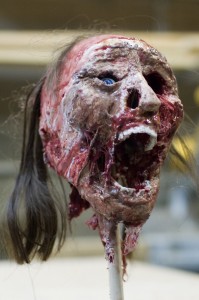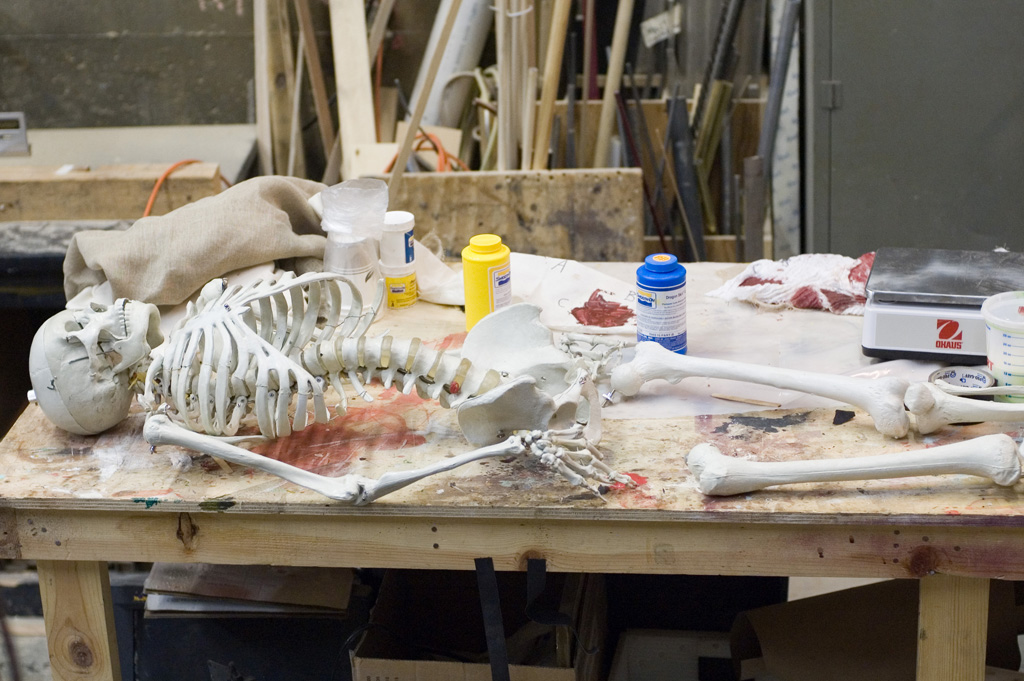In part one of “making a body for Bacchae“, we developed a series of samples and prototypes of dead body parts out of spray foam, Foam Coat, and Dragon Skin. Since then, we’ve been able to show the pieces to the whole production team; John Conklin, the scenic designer, and JoAnne Akalaitis, the director, gave us the go-ahead to continue on with the actual body pieces.
We started with a skeleton. We were originally going to get a skeleton from a medical supply store, but I found a corpsing tutorial at “Skull and Bones.com” which shows that you can get a “4th quality” skeleton from certain companies for a lot cheaper. It may be missing some hardware and fasteners, and the overall quality will be less, but all the pieces are there, and for our purposes, it was perfect.
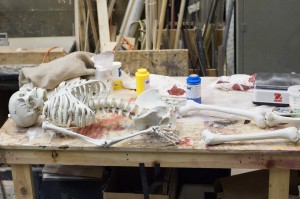
We broke the skeleton apart into several pieces. In the play, King Pentheus is killed through sparagmos, and we had to make the end result. The legs and skull were three separate pieces. We left one shoulder blade and upper arm on the torso, which left us with one complete arm, and one forearm.
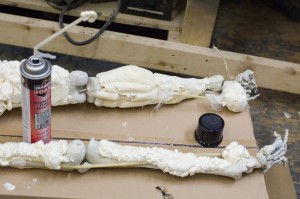
Like the sample pieces, we built the muscle up by spraying expanding foam onto the bones, carving it into muscles, and coating everything with Rosco Foam Coat.
We wanted tendons and ligaments connecting the various bones, and one of the materials we tried was surgical tubing. Unfortunately, we discovered later on that it is latex, which means the Dragon Skin will not cure on top of it. Fortunately, the color of the tubing isn’t too far off from where we want it, but we may need to find some other way to paint or tint it.
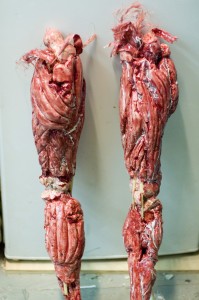
Michael Krikorian was heading up the arms and the torso.
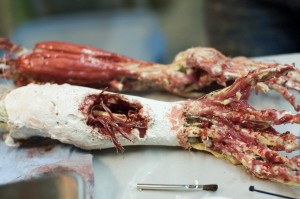
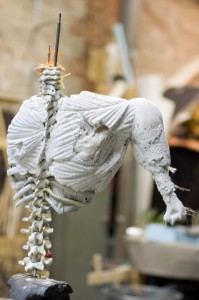
He has been relying a lot on his experience hunting and field-dressing animals for this project. Still, all of us have been using a lot of research and reference for accuracy.
For the skull, we wanted to have more of a recognizable face, rather than a skull with bits of flesh on it. In addition to spray foam for muscles, I used some epoxy putty to build up the nose and other features. I also attached pieces of muslin for skin and “hanging bits”. During the initial presentation of the samples, John Conklin had mentioned he wanted to see hanging bits from the head.
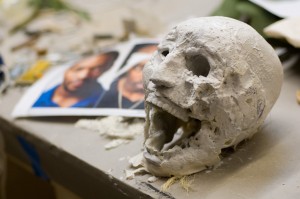
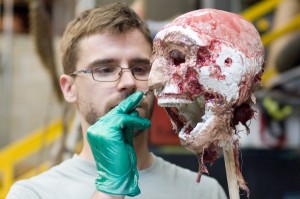
One of the other things John Conklin had wanted to see was bits of hair on the skull. The actor himself has no hair, but he is wearing a wig as part of his disguise when he is killed. John wanted the head to have some scraps of this wig hair hanging from it. We still need to show these to the designer and director, so we’ll see whether they like this, or if it even makes sense for this play.
